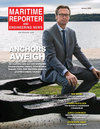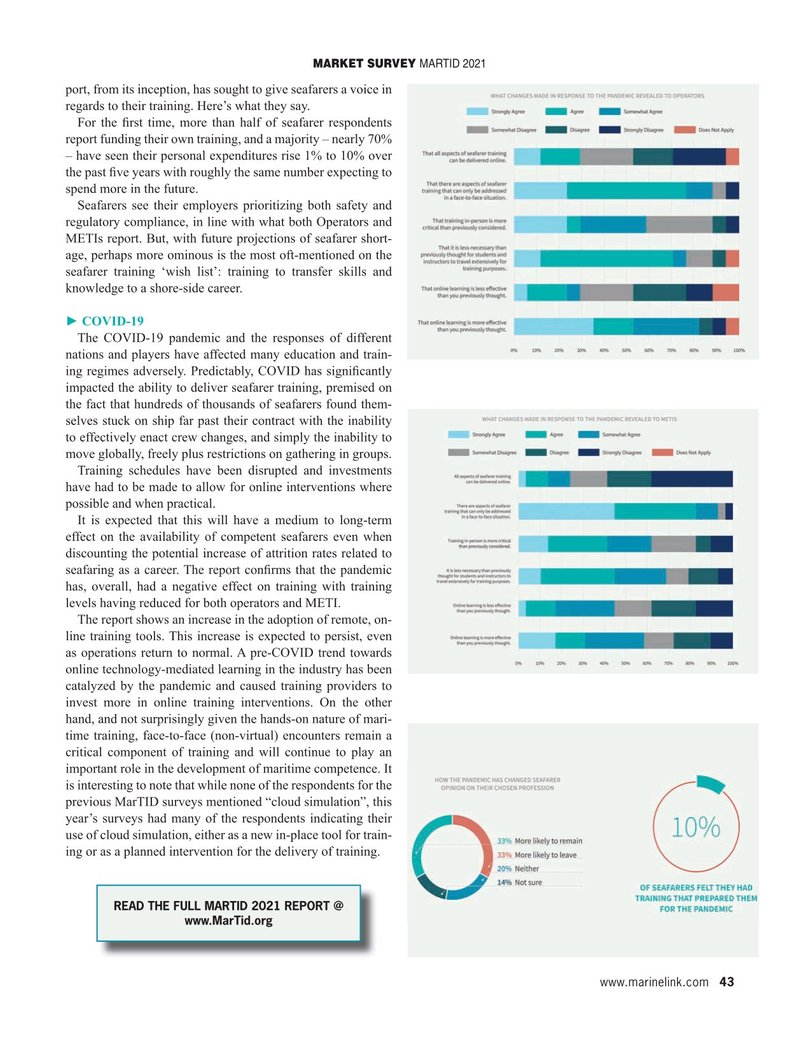
Page 43: of Maritime Reporter Magazine (January 2022)
The Ship Repair & Conversion Edition
Read this page in Pdf, Flash or Html5 edition of January 2022 Maritime Reporter Magazine
MARKET SURVEY MARTID 2021 port, from its inception, has sought to give seafarers a voice in regards to their training. Here’s what they say.
For the ? rst time, more than half of seafarer respondents report funding their own training, and a majority – nearly 70% – have seen their personal expenditures rise 1% to 10% over the past ? ve years with roughly the same number expecting to spend more in the future.
Seafarers see their employers prioritizing both safety and regulatory compliance, in line with what both Operators and
METIs report. But, with future projections of seafarer short- age, perhaps more ominous is the most oft-mentioned on the seafarer training ‘wish list’: training to transfer skills and knowledge to a shore-side career.
? COVID-19
The COVID-19 pandemic and the responses of different nations and players have affected many education and train- ing regimes adversely. Predictably, COVID has signi? cantly impacted the ability to deliver seafarer training, premised on the fact that hundreds of thousands of seafarers found them- selves stuck on ship far past their contract with the inability to effectively enact crew changes, and simply the inability to move globally, freely plus restrictions on gathering in groups.
Training schedules have been disrupted and investments have had to be made to allow for online interventions where possible and when practical.
It is expected that this will have a medium to long-term effect on the availability of competent seafarers even when discounting the potential increase of attrition rates related to seafaring as a career. The report con? rms that the pandemic has, overall, had a negative effect on training with training levels having reduced for both operators and METI.
The report shows an increase in the adoption of remote, on- line training tools. This increase is expected to persist, even as operations return to normal. A pre-COVID trend towards online technology-mediated learning in the industry has been catalyzed by the pandemic and caused training providers to invest more in online training interventions. On the other hand, and not surprisingly given the hands-on nature of mari- time training, face-to-face (non-virtual) encounters remain a critical component of training and will continue to play an important role in the development of maritime competence. It is interesting to note that while none of the respondents for the previous MarTID surveys mentioned “cloud simulation”, this year’s surveys had many of the respondents indicating their use of cloud simulation, either as a new in-place tool for train- ing or as a planned intervention for the delivery of training.
READ THE FULL MARTID 2021 REPORT @ www.MarTid.org www.marinelink.com 43
MR #1 (34-49).indd 43 1/6/2022 10:05:27 AM

 42
42

 44
44
